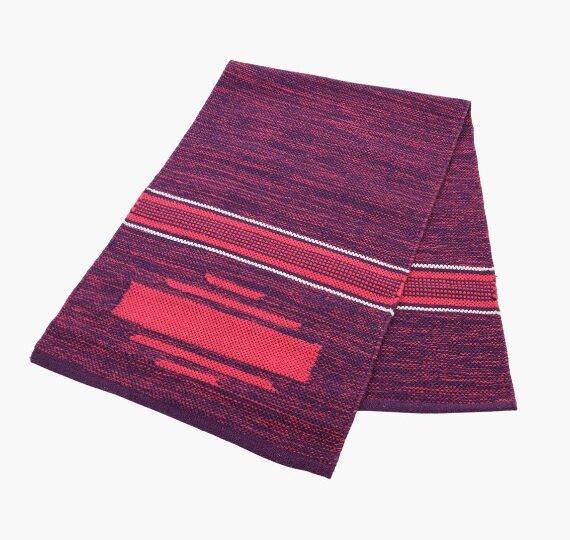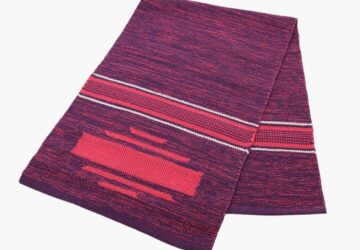In the world of yoga, the mat beneath your feet is more than just an accessory—it’s a foundation for your practice. With growing awareness around sustainability, comfort, and performance, many yogis are questioning whether traditional mats made from synthetic materials are still the best option. Enter the cotton yoga mat—a natural, breathable, and increasingly popular alternative.
But how does it stack up against conventional options like PVC, rubber, and TPE mats? Let’s dive deep into this comparison and help you find the best support for your body, mind, and lifestyle.
1. Material Composition: Natural Cotton vs. Synthetic Alternatives
Traditional yoga mats are typically made from PVC (polyvinyl chloride), TPE (thermoplastic elastomer), or natural rubber. While these materials offer certain benefits—like high elasticity and durability—they are largely synthetic and, in many cases, not biodegradable or eco-friendly.
On the other hand, cotton yoga mats are made from 100% natural fibers, often handwoven and free from harmful chemicals. This makes them ideal for those with skin sensitivities or who prioritize organic, chemical-free living. Cotton mats don’t release toxic fumes and offer a more grounded, natural surface to practice on.
2. Grip and Traction: Which Mat Keeps You Grounded?
Grip is one of the most important features of a yoga mat, especially for styles like Vinyasa or Power Yoga, where you’re constantly moving.
- Traditional mats often have textured surfaces that provide excellent grip, especially when dry.
- However, some of them can become slippery when wet, unless they are specifically designed for hot yoga.
Cotton yoga mats excel in moisture absorption. As you sweat, the cotton fibers absorb moisture, which enhances your grip, making them a natural choice for hot yoga or high-sweat environments.
If you’re looking for stability in sweaty sessions, cotton may outperform certain synthetic options.
3. Comfort and Cushioning: Support for Joints and Poses
Comfort is crucial for longer sessions or for those with sensitive knees and joints.
- PVC and TPE mats are often praised for their thickness and cushioning, making them suitable for practices that require joint support.
- Cotton mats, while thinner and firmer, offer a softer touch and a more earthy, grounded feel.
For those who like to feel connected to the floor (especially in Hatha or Yin Yoga), cotton mats provide a natural comfort. You can also place a cotton mat over a foam base for added cushioning.
4. Durability and Longevity: How Long Does Each Mat Last?
- Synthetic mats are engineered for toughness and often last 2–5 years with regular use.
However, high-quality cotton mats (especially handwoven or organic ones) are impressively resilient and can last several years if properly cared for.
5. Hygiene and Maintenance: Which One Is Easier to Clean?
Hygiene is a major concern, particularly in hot yoga classes where mats become saturated with sweat.
- Synthetic mats require regular wiping down with antibacterial sprays and occasional deep cleaning, but they can absorb odors over time.
- Cotton mats can be easily machine-washed, making them much more hygienic in the long run.
Because they’re made of breathable material, cotton mats also dry quickly and are less prone to mold and bacterial buildup.
6. Eco-Friendliness: What’s Better for the Planet?
This is where cotton yoga mats truly shine.
- PVC mats are made from petroleum-based materials and are non-biodegradable. Disposing of them responsibly is a challenge.
- TPE and rubber mats are better but still contain some industrial components.
Cotton mats are 100% biodegradable, recyclable, and typically dyed with non-toxic, plant-based colours. If you follow a sustainable lifestyle or prefer to support eco-conscious brands, cotton mats align with your values.
7. Portability and Weight: Which Mat Travels Better?
If you travel often or carry your mat to and from class, portability matters.
- Traditional mats, especially the thicker ones, can be bulky and heavy (especially natural rubber).
- Cotton yoga mats are lightweight, easy to fold, and can even double as a throw or shawl in colder climates.
They take up minimal space in a backpack or suitcase, making them ideal for traveling yogis or those commuting by bike or public transport.
8. Aesthetic and Texture Preferences: The Look and Feel of Your Mat
The feel of the mat beneath you can affect your flow.
- PVC mats offer a uniform, grippy surface that feels very modern and synthetic.
- Cotton mats provide a textured, earthy feel. Many are beautifully handwoven with ethnic patterns and offer a tactile, warm surface.
If you’re drawn to a more traditional or mindful aesthetic, cotton mats create a calming atmosphere that complements meditation or spiritual practices.
9. Cost Comparison: Is Cotton More Expensive Than Synthetic?
Yoga mats come in a wide range of prices, but here’s the general comparison:
- PVC mats can be found for as little as ₹500–₹1500 ($10–$20).
- TPE and rubber mats fall in the ₹2000–₹5000 ($25–$60) range.
- Cotton yoga mats vary widely depending on weave quality and brand. Handwoven or organic options may range from ₹1500–₹4000 ($20–$50).
While cotton mats may seem slightly more expensive, the long-term health and environmental benefits often justify the cost for conscious consumers.
10. Best Use Cases: Matching the Right Mat to Your Practice Style
“Use this quick guide to pick the right mat for your yoga style:”
| Yoga Style | Best Mat Type |
| Hatha / Yin Yoga | Cotton Mat (grounded, calm) |
| Vinyasa / Power Yoga | Hybrid or Cotton w/ Grip |
| Hot Yoga / Bikram | Cotton (sweat-absorbing) |
| Restorative / Meditation | Cotton (soft, cozy) |
| Ashtanga | TPE or Rubber (firm grip) |
Cotton mats may also be used as a topper over a synthetic mat if you want the best of both worlds—comfort + grip.
Final Verdict: Which Mat Truly Supports Your Practice?
Both cotton and traditional mats have their pros and cons. The right choice ultimately depends on your personal values, yoga style, and comfort preferences.
Choose a cotton yoga mat if:
- You prefer natural, breathable materials
- You practice hot yoga or sweat a lot
- Sustainability is a priority
- You value washability and hygiene
Stick to a traditional mat if:
- You need extra cushioning for joints
- You practice very dynamic or high-impact yoga
- You want maximum traction on a slick surface
Whichever path you choose, let it support more than just your poses—let it reflect your philosophy, intention, and lifestyle on and off the mat.







